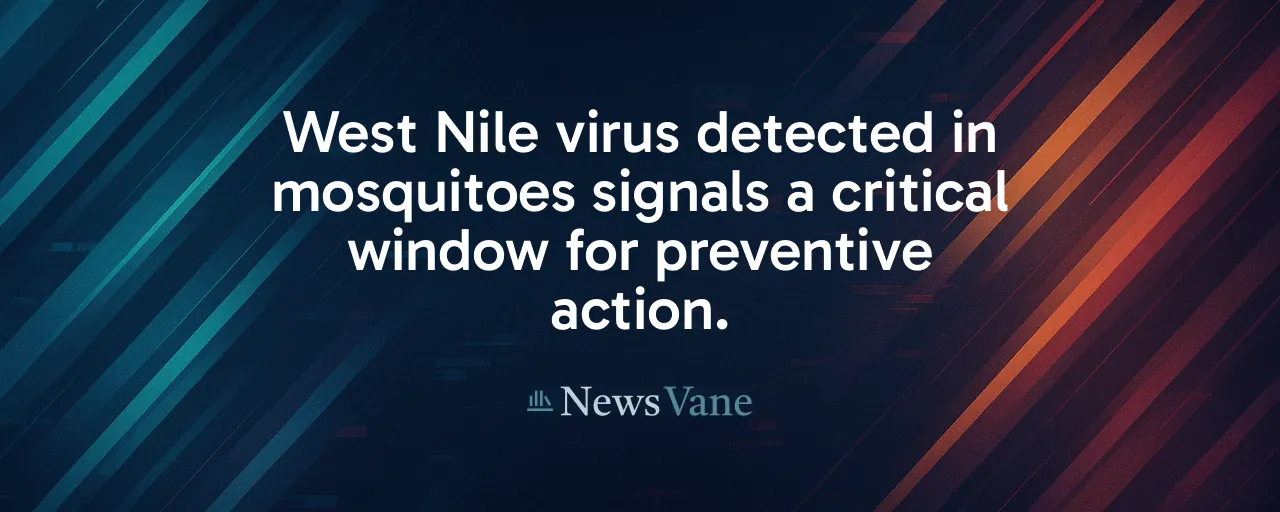A Silent Threat Emerges
Summer in Gibson County, Indiana, brings warm evenings and buzzing mosquitoes, but this year, a hidden danger surfaced. On July 9, 2025, local health officials announced that mosquitoes tested positive for West Nile virus, marking the first detection of the season. While no human cases have appeared yet, the finding raises alarm for residents, especially as peak mosquito activity looms. This news, though concerning, offers a chance to act before the virus spreads further.
West Nile virus, carried by Culex mosquitoes, can cause fever, neurological illness, or, in rare cases, death. About one in 150 infected people develop severe symptoms, with older adults and those with weakened immune systems at greatest risk. The Gibson County Health Department's discovery, part of routine surveillance, signals a need for immediate, practical steps to protect communities while avoiding overreactions that could strain resources or spark undue panic.
Why Early Detection Matters
Catching West Nile virus in mosquitoes before human cases emerge provides a critical window for action. Research shows that mosquito infections typically precede human cases by two to six weeks, giving health officials time to ramp up prevention. In Indiana, where the virus has circulated annually since 2002, this early warning system has proven effective. The Centers for Disease Control and Prevention reported 2,445 U.S. human cases in 2024, with the Midwest heavily affected, underscoring the stakes.
Gibson County's response builds on this science. By testing mosquito pools, officials pinpoint where the virus lurks, allowing targeted interventions. This approach avoids blanket measures that can be costly or disruptive. For residents, it means practical advice, like using repellents and draining standing water, becomes urgent. The goal is clear: reduce risk without overwhelming communities or local budgets.
Balancing Control With Care
Effective mosquito management requires a mix of tools, from larvicides to public education. Studies highlight integrated mosquito management as the gold standard, combining surveillance, targeted spraying, and community efforts to eliminate breeding sites. In Gibson County, officials are urging residents to clear stagnant water from yards while deploying larvicides in high-risk areas. This strategy keeps costs low, averaging $2 to $4 per resident annually, compared to over $30,000 for treating a single severe case.
However, challenges persist. Spraying is effective when it aligns with weather conditions, and staffing for surveillance stretches thin budgets. Environmental concerns also arise, as pesticides can affect wildlife. Local leaders are navigating these trade-offs, prioritizing EPA-approved chemicals and habitat fixes, like improved drainage, to reduce mosquito populations without harming ecosystems. This balanced approach aims to protect health while respecting community and environmental needs.
Lessons From the Past
Indiana's history with West Nile virus offers valuable insights. Since its U.S. arrival in 1999, the virus hit Indiana hard in 2002, prompting statewide surveillance. A peak of 77 human cases in 2012 led to stronger local programs. Gibson County has seen detections in 2012, 2016, 2019, 2022, and now 2025, reflecting a recurring summer threat. These patterns show that proactive measures, like early spraying and education, curb outbreaks effectively.
Past successes point to community involvement as a cornerstone. Volunteer clean-ups to remove standing water and school campaigns to promote repellents have worked before. Today, Gibson County is doubling down on these efforts, encouraging residents to act as partners in prevention. This collaborative spirit, grounded in data, keeps the response focused and sustainable.
Protecting the Vulnerable
Risk from West Nile virus varies among the population. Older adults and those without access to air-conditioned homes or window screens are more exposed. Low-income neighborhoods, where drainage issues often persist, can become breeding hotspots. Addressing these disparities involves targeted outreach, such as door-to-door education and free repellent distribution, to ensure all residents are protected.
Hospitals and clinicians also play a key role. With about 10% of severe cases proving fatal, early diagnosis saves lives. Gibson County's health department is working with local providers to spot symptoms quickly, especially in high-risk groups. By combining medical vigilance with community action, the response aims to shield those most in danger while keeping the broader public safe.
A Path to Resilience
Gibson County's West Nile detection serves as a wake-up call and presents an opportunity. By blending surveillance, targeted control, and public engagement, the county can limit the virus's spread while keeping costs and environmental impacts in check. State support, through grants for drainage projects or surveillance staff, could amplify these efforts without imposing rigid mandates. Residents, too, hold power, from clearing yards to advocating for local funding.
The broader lesson is one of balance. Public health thrives when data drives decisions, communities pitch in, and leaders weigh all impacts. As summer unfolds, Gibson County's response could set a model for others, proving that practical, collaborative steps can tame even a persistent threat like West Nile virus.
Looking ahead, the focus remains on action over alarm. With mosquitoes buzzing and risks rising, the county's blend of science, strategy, and teamwork offers a clear way to protect lives and build resilience for seasons to come.
